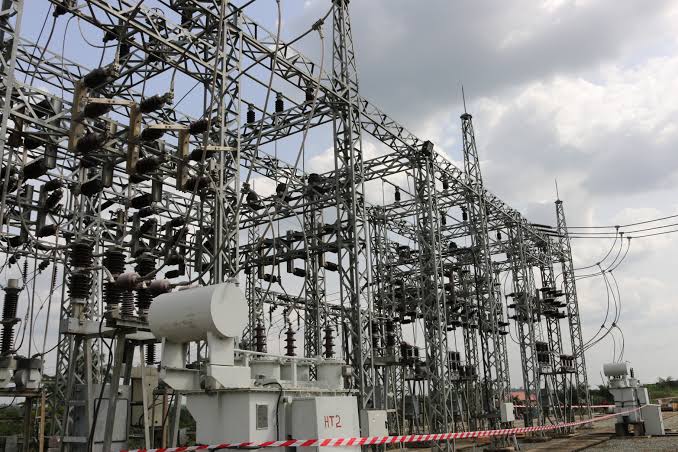
Recently, the former governor of Osun State and now the Minister of Marine and Blue Economy, Alhaji Gboyega Oyetola, performed the ground-breaking of the Gateway Inland Dry Port located at Kajola, Ewekoro Local Government Area of Ogun State. The act is an indication that Ogun State, though already the industrial hub of the nation, is also building the foundation to becoming the logistics capital not only of Nigeria but of the West African sub-region.
As the name implies, a dry port is a port that is away from the sea. It is more inland and connected to a seaport with either a paved road or railway. Dry ports are terminals where cargo brought over on ships is transhipped. These inland ports often include storage facilities for a massive quantity of goods and are used for customs clearance of those goods.
It is a well-known fact that where goods are produced, there is always the need to take the finished products to where they are needed and also to bring in raw materials for production. This means that logistics play important part in the production chain of any manufacturing company.
To ensure that the over 6000 manufacturing industries operating in the State do not have issues relating to logistics and taking cognisant of the place of logistics in manufacturing environment, the government of Dapo Abiodun made the dry port part of the State transportation master plan.
The Minister, who was delighted that Ogun State government would conceive such initiative of having a dry port, was of the view that the port had vast economic potential as the project was not merely about building infrastructure but about laying the foundation for a key logistics hub that would facilitate the movement of goods across Nigeria.
He emphasized that through the project, over 5,000 direct and 15,000 indirect jobs would be created while it would also stimulate local businesses as well as attract investments that would spur regional development,
One would not more with the Minister when be said that the development of inland dry ports, like the Gateway Inland Dry Port, was a critical component of a broader strategy to position Nigeria as a leading player in the Blue Economy.
Furthermore, Oyetola noted that as nation continued to diversify the economy, it was essential to create infrastructure that would serve as key nodes in the supply chain, reducing our reliance on traditional seaports.
The resolve to make the Gateway Inland Dry Port a model for other inland dry ports in Nigeria, and the fact that it would be built to meet international standards, capable of handling the demands of modern trade, is something that should gladden the heart of Ogun State people.
It is imperative at this juncture to applaud the Minister who emphasized that the Port “will be equipped with the latest digital systems for tracking, clearance, and cargo movement, ensuring efficiency, transparency, and global competitiveness as port promises to be a game-changer for our country’s economic and industrial landscape”.
The benefit of having dry ports such as the Gateway Inland Dry is their ability to relieve the issues of storage and customs space that frequently plague seaports. Ports located along the ocean have a limited amount of space, which is far less than is sometimes necessary to handle the large quantities of goods coming in. They help reduce the competition of companies trying to get their goods stored temporarily before they embark onward to their destinations.
Another benefit is the ability of a dry port to speed up the movement of cargo between ships and inland transportation systems that distribute the goods. This helps maintain dry ports as central distribution hubs for a massive amount of goods, as the import and export of goods become quicker.
Furthermore, dry ports are specialized facilities that are designed to process standardized shipping containers used within international transport. The use of these shipping containers makes it easy to move goods off of a ship and onto a tractor-trailer, train, or another ship. The transported goods only need to be unloaded once they arrive at their final processing destination.
Dry ports also act as a cost-effective distribution channel between seaports and high-capacity rail. The entire process becomes more efficient, thanks to this link existing within the supply chain. Collection of the containers is simple and fast, allowing for goods to reach their final destinations quicker, at a lower price.
In addition, there is also an environmental benefit to using dry ports as a study has found that when dry ports are used in the supply chain, CO2 emissions are roughly 25% lower than they normally would be. That is a significant reduction in pollution caused by the transportation of goods.
For Governor Abiodun, the Dry Port, whose first phase sits on 600 hectares of land is not just like others, but a game changing transportation infrastructural project and would serve as key enabler of industrial activities and manufacturing thus solidifying the State’s position as the foremost logistics and industrial hub in the county.
As the nation continues her movement towards industrialisation, more and more dry ports will certainly be needed and one is happy that Ogun State government has not only taken a giant steps towards making the State a logistics capital of Nigeria, but also expanding the logistical frontier of the nation.
*Udofia writes from Laderin, Abeokuta

 2 hours ago
8
2 hours ago
8







 English (US) ·
English (US) ·